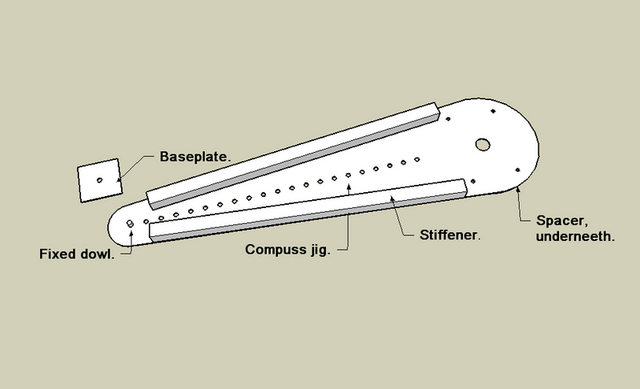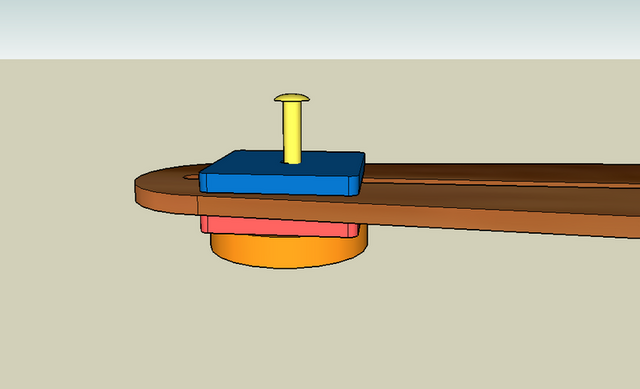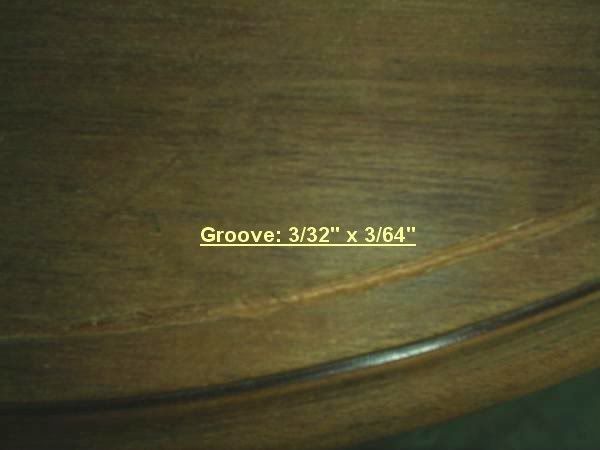garywayne
Established Member
Hi all.
Not sure if this should be here, hand tools, or projects.
Scenario: Narrow groove in round table.
Objective: Widen groove a tad.
I have made this jig:-

Instead of using a pin to center the jig, I thought I would use a base plate with a dowel hole, and connect it to the table using double sided tape. At the other end of the jig there is a spacer underneath so everything will be level.
What I am asking from you is, what do you thing is the best way to turn this jig into a sliding adjustable jig. So that it can be adjusted exactly to ware I need to widen the groove in the table.
All suggestions will be contemplated.
Thank you all for you input, and the use of your little grey cells.
Not sure if this should be here, hand tools, or projects.
Scenario: Narrow groove in round table.
Objective: Widen groove a tad.
I have made this jig:-

Instead of using a pin to center the jig, I thought I would use a base plate with a dowel hole, and connect it to the table using double sided tape. At the other end of the jig there is a spacer underneath so everything will be level.
What I am asking from you is, what do you thing is the best way to turn this jig into a sliding adjustable jig. So that it can be adjusted exactly to ware I need to widen the groove in the table.
All suggestions will be contemplated.
Thank you all for you input, and the use of your little grey cells.






